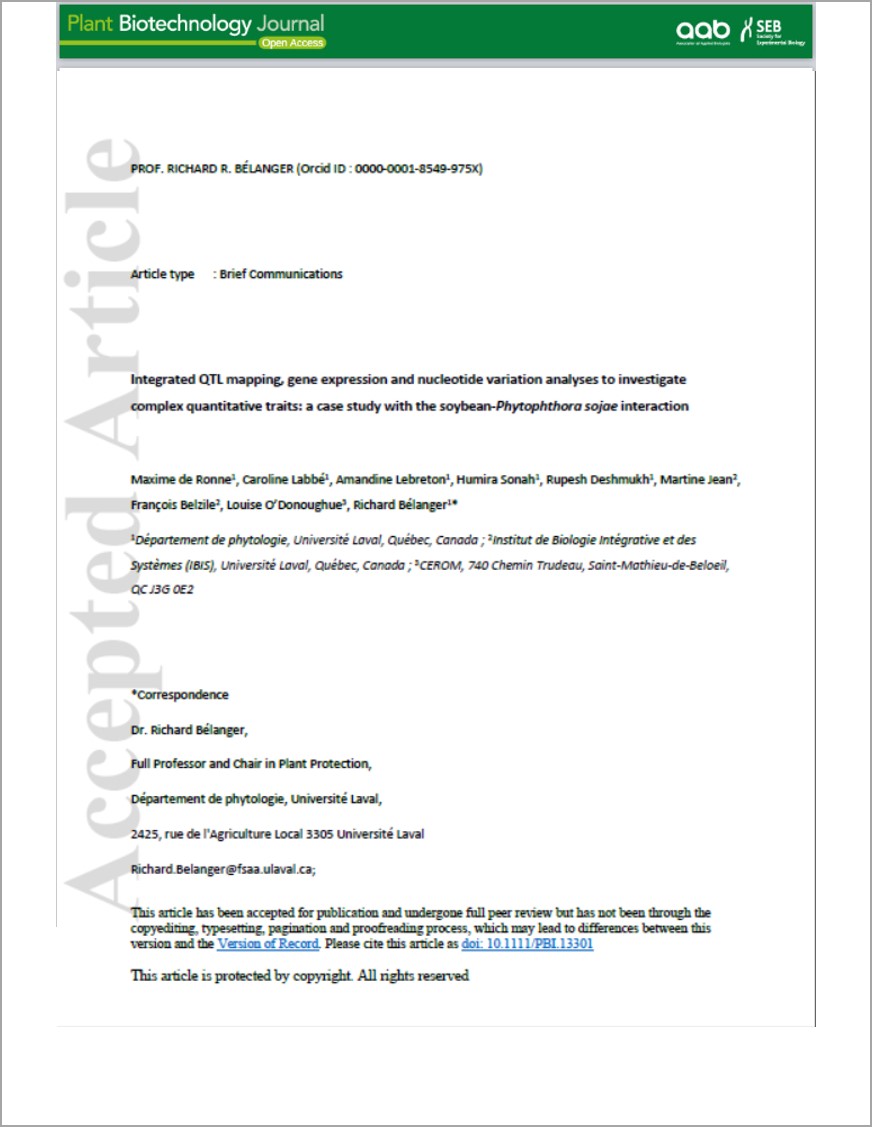Manuscripts

- Publication date : 2019-11-27
Reference
De Ronne, M., Labbe, C., Lebreton, A., Sonah, H., Deshmukh, R., Jean, M., Belzile, F., O'Donoughue, L., Belanger, R. 2019. Integrated QTL mapping, gene expression and nucleotide variation analyses to investigate complex quantitative traits: a case study with the soybean-Phytophthora sojae interaction. Plant Biothechnology Journal.
Abstract
Soybean (Glycine max (L.) Merr.) is the most important legume in the world(Dorff, 2007; Shoemaker et al., 1996). However, the rapid expansion of its cultivated areas, has created new ecological niches for many pathogens. Among them, Phytophthora sojae (Kaufmann and Gerdemann) ‐ ranks as one of the most damaging soybean pests in the world. The most common method to control it is the introgression of resistance genes termed Rps (Resistance to P. sojae) into elite cultivars. This imposes a high selection pressure on P. sojae leading to the development of new virulent pathotypes.






